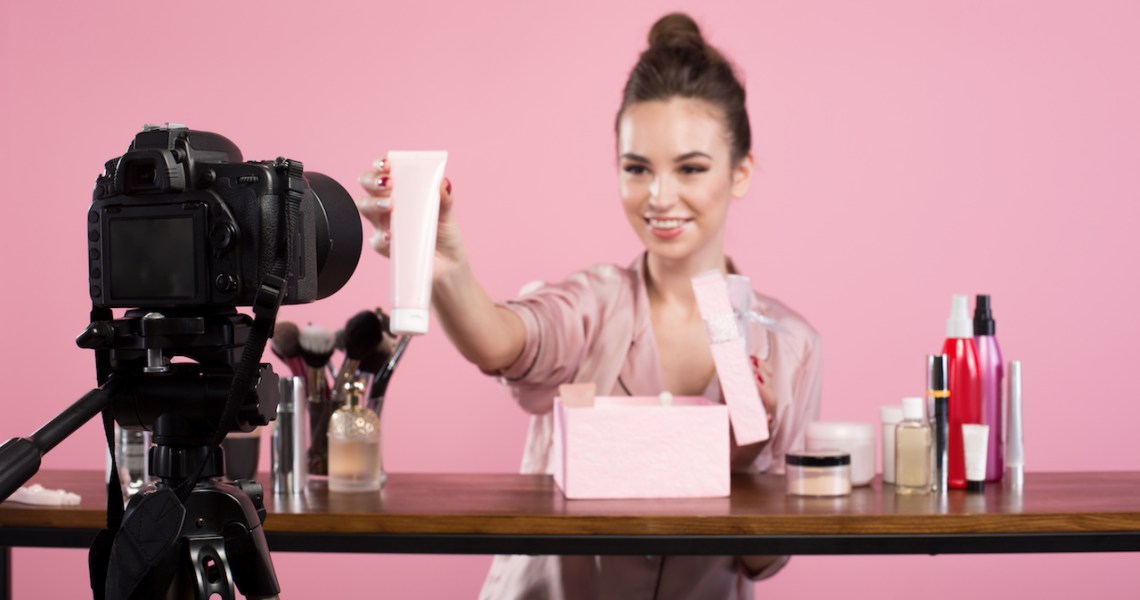Welcome to the Glossy+ Research Briefing, your weekly curation of fashion and beauty research insights. Glossy+ members have full access to the research below.
In this edition, we share focal points from Glossy’s second installment of our CMO Strategies series, which analyzes the retail media landscape and its role in marketers’ playbooks.
Interested in sharing your perspectives on the future of fashion, luxury and beauty?
Apply to join the Glossy research panel.
Viewers trust in the brands and products micro-influencers recommend
At Glossy Pop’s inaugural Glossy Beauty Pop event, held last week in Los Angeles, five panel discussions captured a snapshot of this moment in time at the intersection of beauty and culture. With an understanding that creators are influencing the future of the beauty industry, not to mention founding many of its notable brands, one of the 10 learnings we took away from the event is that authenticity is a buzzword in brand promotions for a reason. Customers can sniff out who’s building a brand built on passion and who’s slapping their name on a product.
Similarly, when it comes to influencer-brand partnerships on YouTube, Glossy’s recently released Influencer Index found that although large influencer subscriber bases ensure videos receive a lot of attention, consumers are skeptical of marketing gimmicks being used within the posts.
Glossy’s analysis found that YouTube channels with smaller subscriber bases create more intimate online communities in which influencers can educate viewers on products, answer questions and provide quality advice in a more personal and authentic manner. And, viewers who subscribe to micro-influencers’ YouTube channels trust not only in the products they recommend, but also the brands with which they partner.
Ad position: web_incontent_pos1
Key findings:
- Kait Gardner (@StateofKait on YouTube; 20,500 subscribers) received the highest index score of 10 for her viewers’ engagement on both sponsored and non-sponsored content. Although her channel had the smallest subscriber base, her videos’ average ratio of views to the average number of likes and comments outranked those of influencers with larger channels where these types of potential customer interactions are lost.
- Ramón Pagan (@GlowbyRamon on YouTube; 55,200 subscribers) is another micro-influencer with fewer than 100,000 subscribers but some of the highest engagement scores. He received a 9.2 index score for engagement on sponsored content and a 9.1 score for non-sponsored content. His sponsored videos elicited levels of viewer engagement that were similar to that of his non-sponsored videos.
Ad position: web_incontent_pos2
Research Rewind: How marketers’ social platform budgets stack up — from Instagram to YouTube
As marketers find success by partnering with influencers to promote their products on YouTube, they’re also devoting a large portion of their marketing budgets to the platform. Along with Instagram, Facebook and TikTok, YouTube took one of the top spots for marketers’ budget allocation in 2023, according to Glossy+ Research’s recent analysis of budget allocations across social media platforms.
When assessing platforms year over year, Instagram and Facebook received the majority of budget allocation in both 2022 and 2023, Glossy’s research found. TikTok came in third after the Meta-owned platforms. Despite its nascency compared to the more mature YouTube, TikTok has quickly become a favorite among marketers.
Key findings:
- Social platforms that took the top spots for budget allocation in 2023 were those that have feeds where ads were much more common — Instagram, Facebook and YouTube. TikTok was the only exception. TikTok has fewer out-of-the-box tools for marketers than its legacy competitors, but its ability to create viral moments has pushed the platform to the top of marketers’ minds.
- Twitter, Reddit and Snapchat fell toward the lower end of marketers’ budgets. Rather than hosting higher quality influencer or professional content, these platforms give users the ability to interact consumer to consumer. Brands typically use the platforms as an opportunity to educate or engage consumers rather than to advertise to them.
See research from all Digiday Media Brands:




